The match between Union Berlin and RB Leipzig on the first Bundesliga match-day included two debuts at once. At first, it was Union Berlin’s first game in the German top-flight. Secondly, it was RB Leipzig’s first Bundesliga match under their new manager Julian Nagelsmann.
Therefore, the match promised to give first signs on whether Union Berlin can keep up with top Bundesliga sides and how Nagelsmann will merge his style of play with the RB Leipzig DNA. These questions and more will be answered in this tactical analysis.
Lineups and formations
Union Berlin coach Urs Fischer lined up his side in a 4-2-3-1 formation. In front of their back four, Grischa Prömel and Robert Andrich pairing up as the double pivot were supposed to ensure defensive stability.
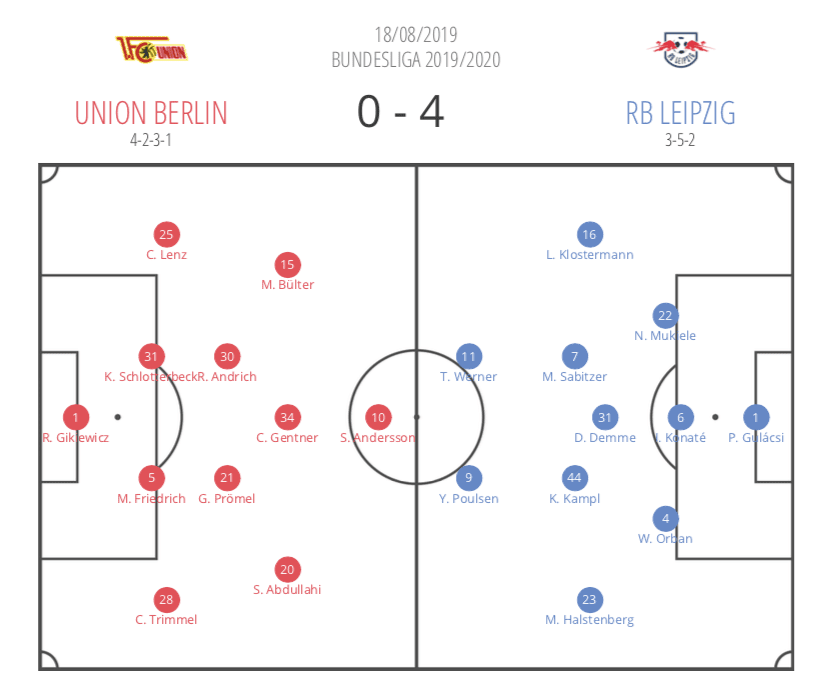
RB Leipzig, on the other hand, deployed Nagelsmann’s favoured 3-1-4-2 formation. With Marcel Sabitzer and Kevin Kampl, the midfield entailed creative players behind the fast striking duo consisting of Timo Werner and Yussuf Poulsen.
Union Berlin’s 4-2-3-1 system was supposed to nullify Leipzig’s strengths to play through the centre using their midfield three. As Leipzig nominally played with a single pivot and two advanced midfielders, this created direct opponents for Berlin’s midfielders. However, the dynamic movement of Nagelsmann’s midfield three enabled them to break Berlin’s man-oriented approach which will be discussed further in the following analysis.
Nagelsmann’s tactical blueprint at RB Leipzig
RB Leipzig operated with a lot of central combinations during their positional attacks.
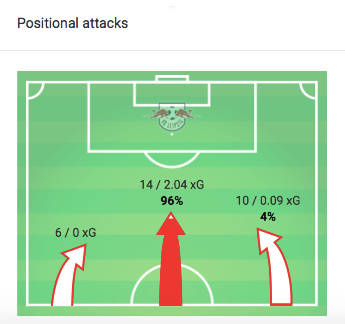
Leipzig used decoy movements to free one advanced midfielder between the opposition midfield and defence. Often the ball near defensive midfielder of Union Berlin followed his direct opponent which opened up a gap in midfield. That way, RB Leipzig could pass the opposition midfield and either play out wide towards one of the forward-moving wing-backs or combine with the strikers to break Union Berlin’s backline.
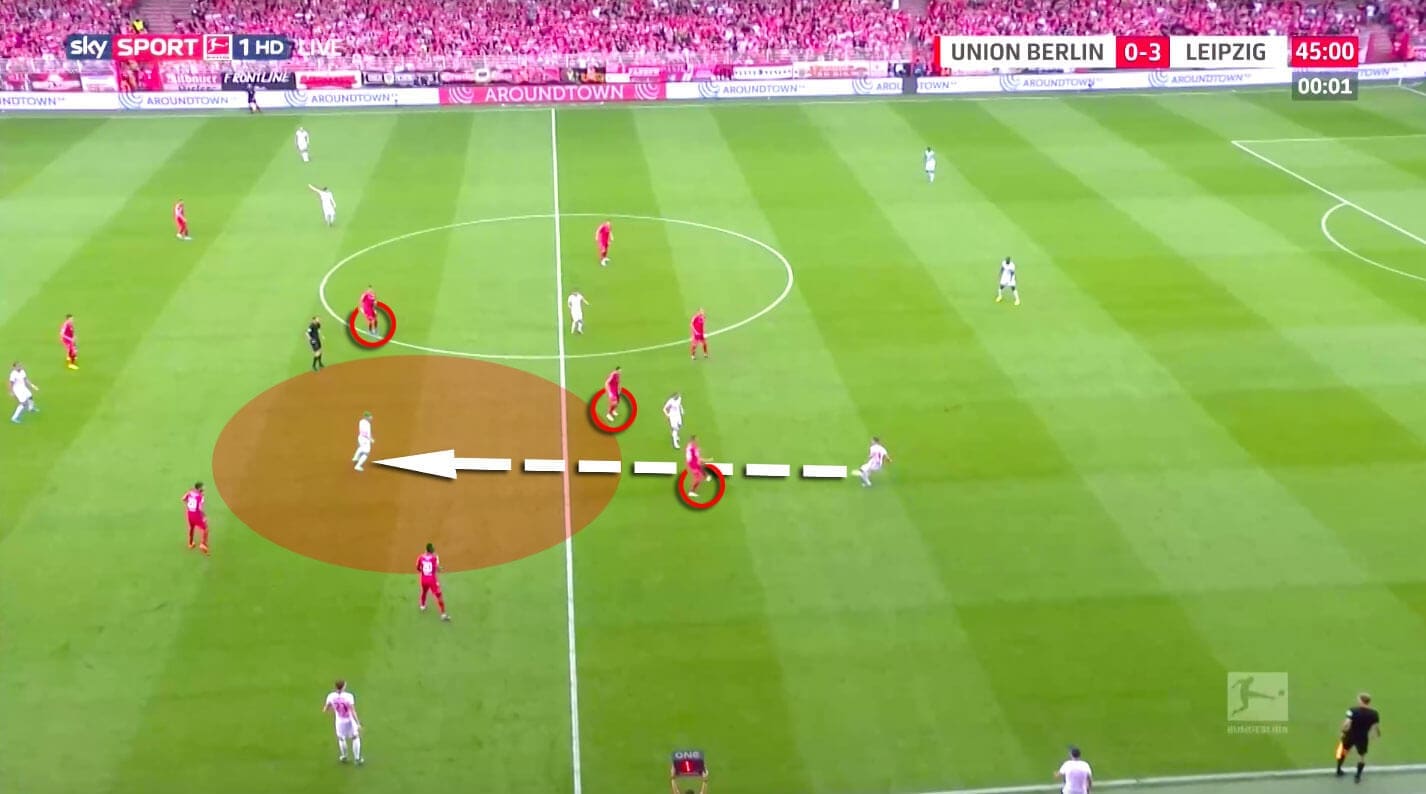
Another way of breaking Union’s midfield was that Leipzig’s advanced midfielders positioned themselves high and far away from each other. That way, Union Berlin was incapable of marking the ball far advanced midfielder who could receive the ball after a switch of play.
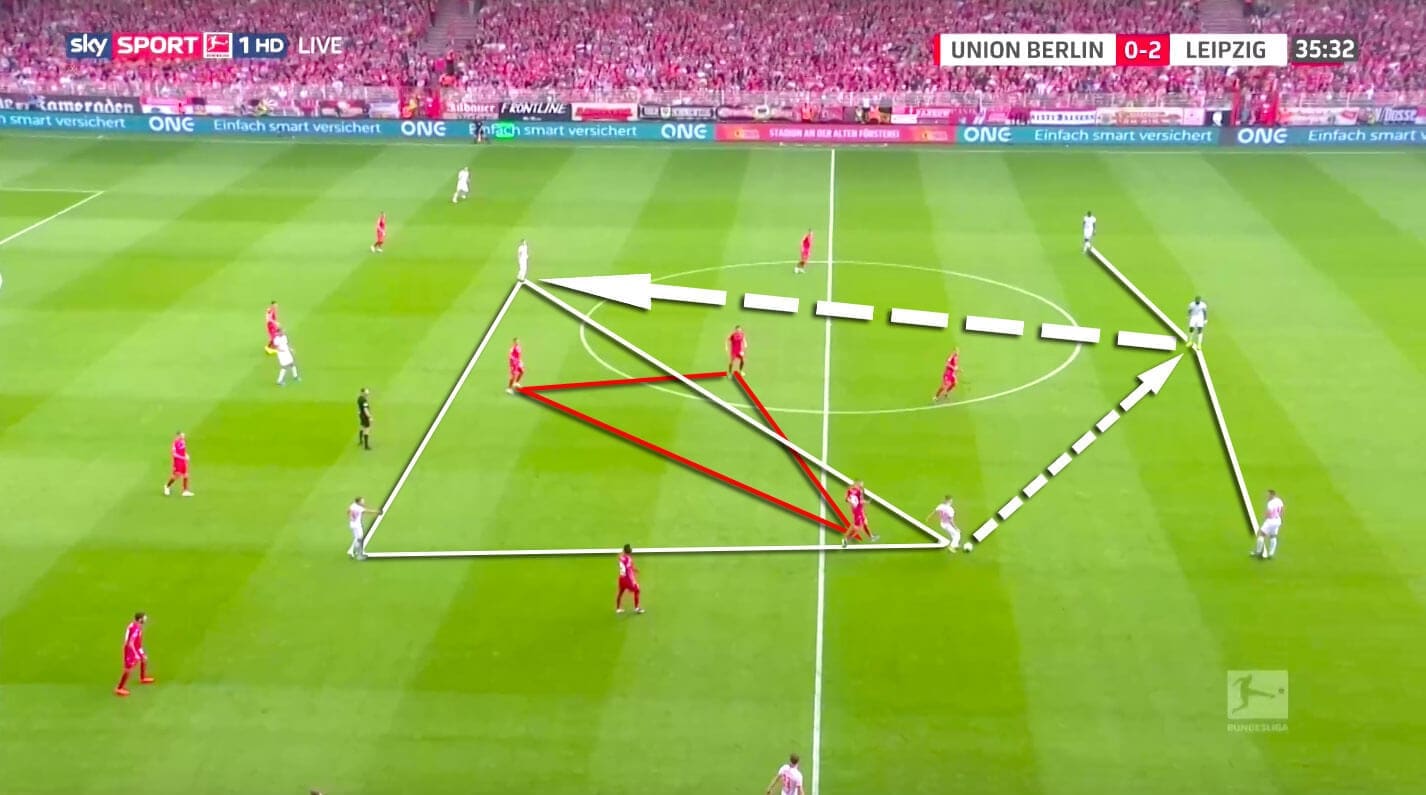
Furthermore, RB Leipzig used one of Nagelsmann’s main principles to get into the last third. They created a superiority behind the opposition midfield as you can see in both images above and below.
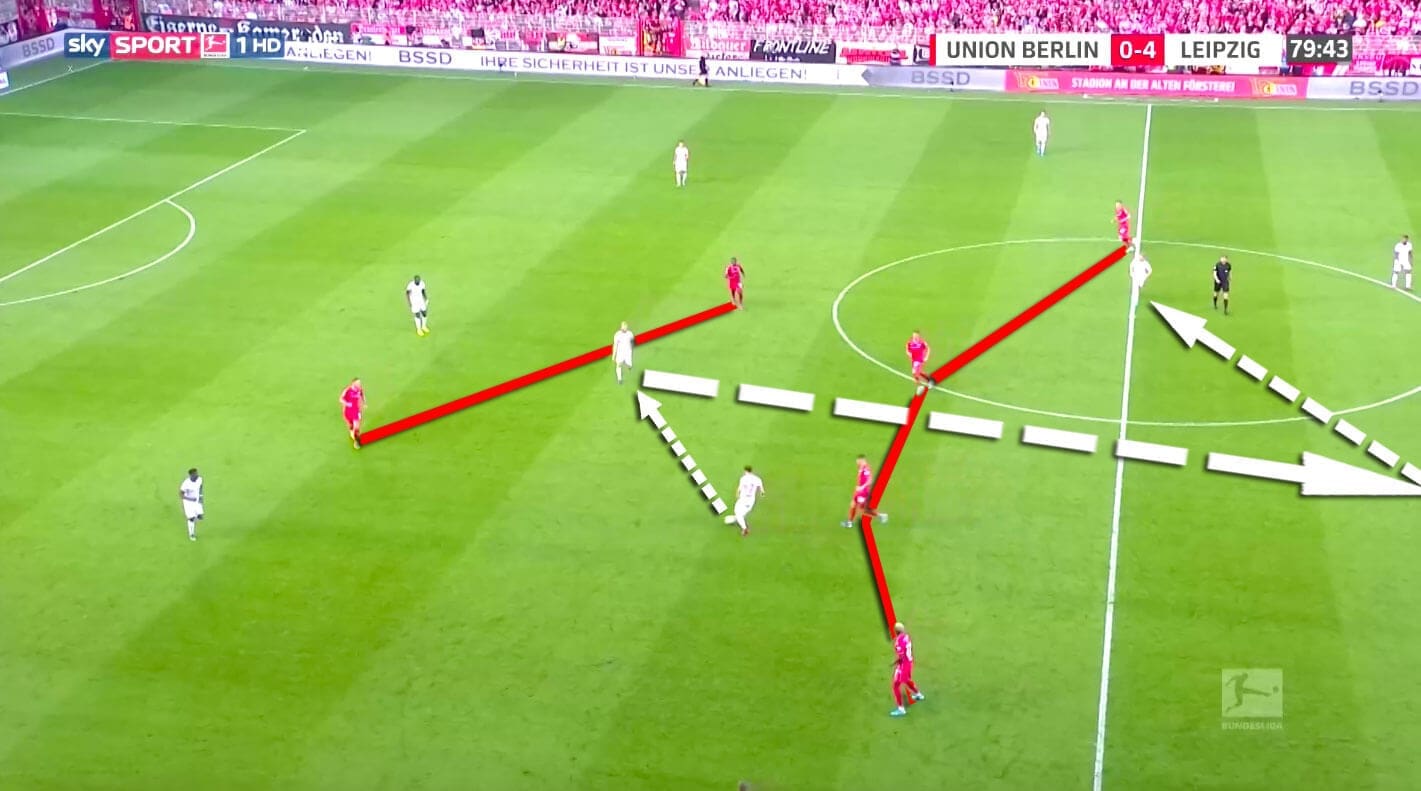
Although Berlin’s defensive 4-2-3-1 formation offered a nominal numerical superiority on the wing against Nagelsmann’s 3-1-4-2 formation, Leipzig regularly used inside-outside combinations using the flanks to progress the ball up the pitch. That was possible as the strikers occasionally moved into a wider area and therewith created angles to combine with the wing-back and advanced midfielder. Therewith, Nagelsmann’s team could overload the opposition full-back who was facing the dilemma of either defending the striker or Leipzig’s wing-back.
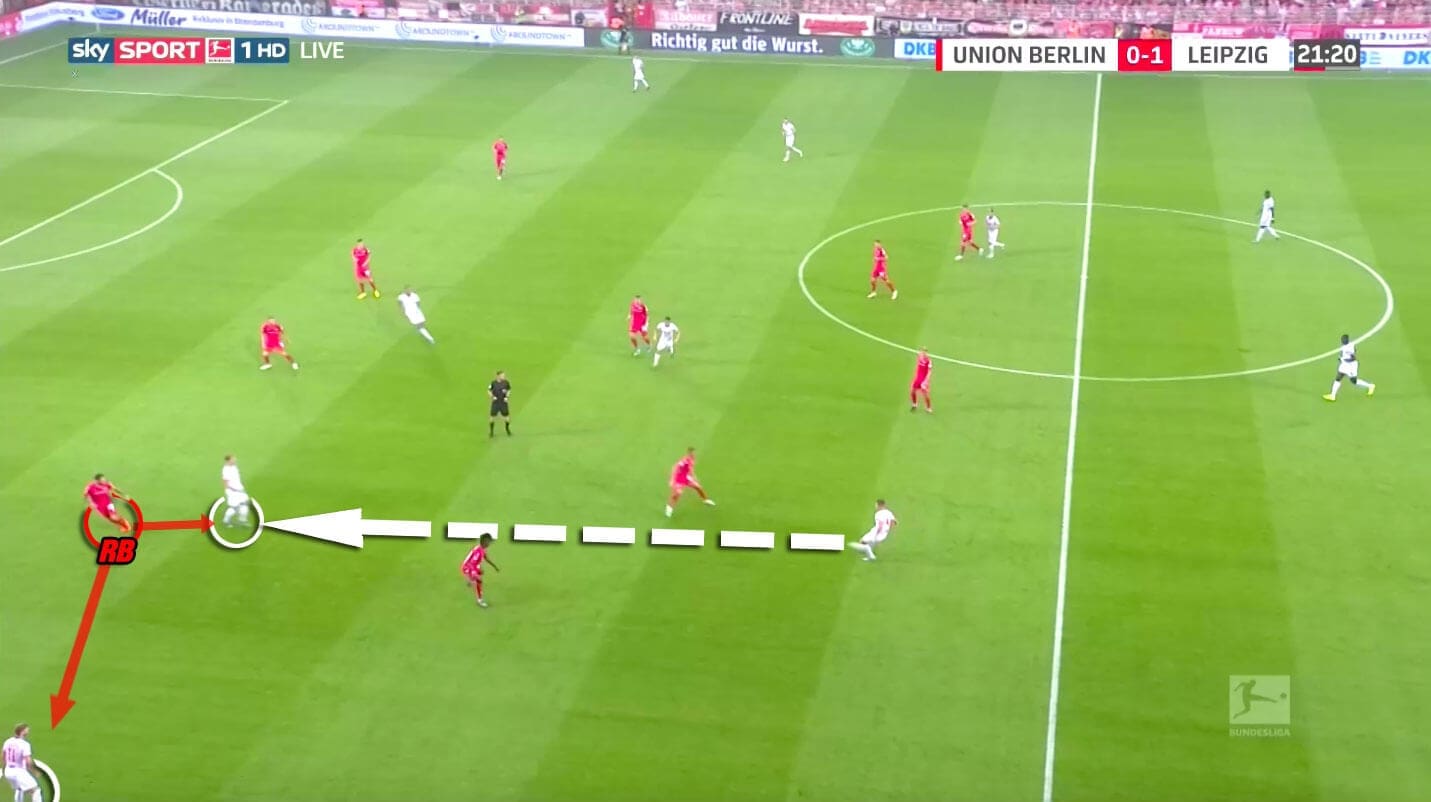
Moreover, Union Berlin’s wingers sometimes missed to track back Leipzig’s wing-backs. That was the case when Leipzig scored their first goal of the day. Left wing-back Marcel Halstenberg received the ball within the penalty area after striker Poulsen dragged Union right-back Christopher Trimmel away from the wing.
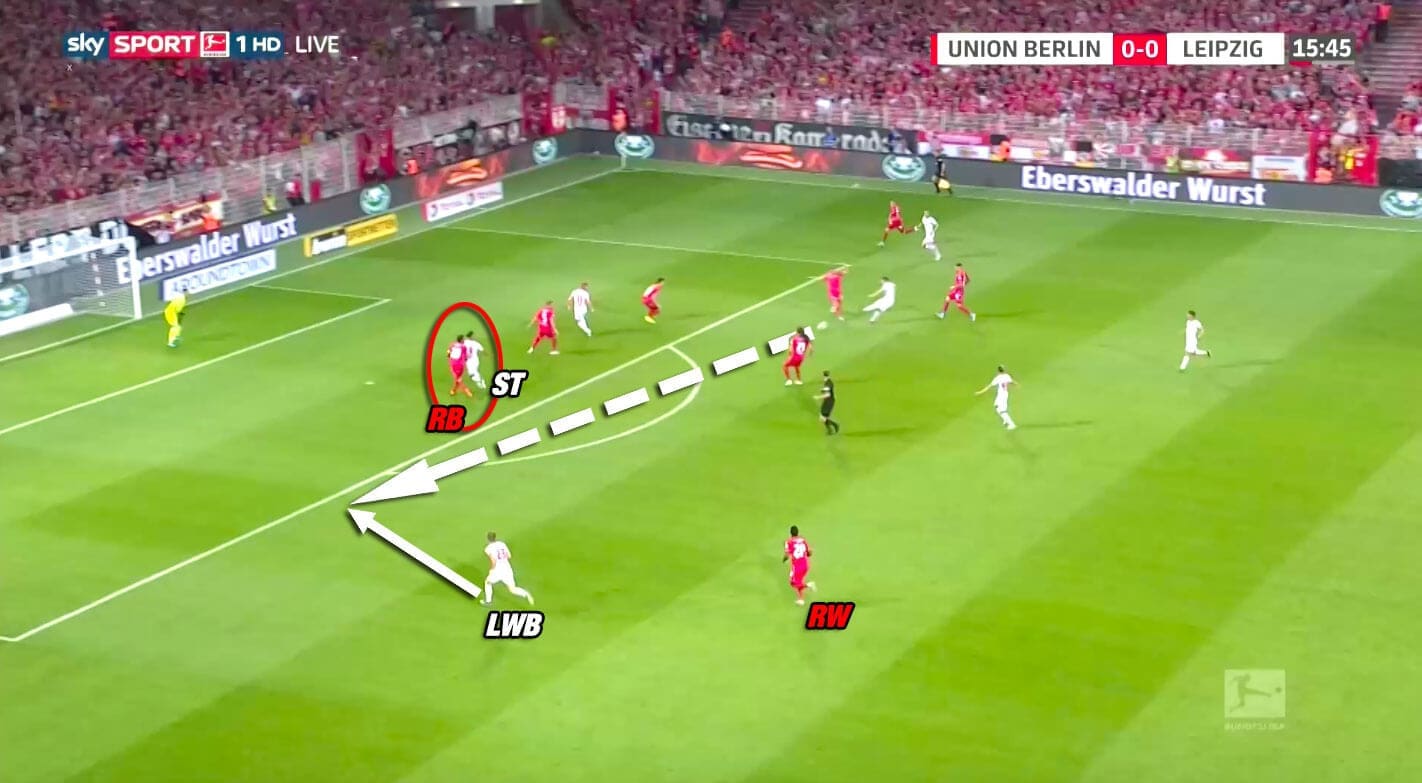
RB Leipzig’s counter-attacking threat penalise Union Berlin’s poor build-up phase
Union Berlin were facing a lot of issues in possession of the ball. Fischer’s side rarely found ways to play out from the back. Leipzig shut down every single passing option within the opposition half whenever Union goalkeeper Rafal Gikiewicz was in possession.
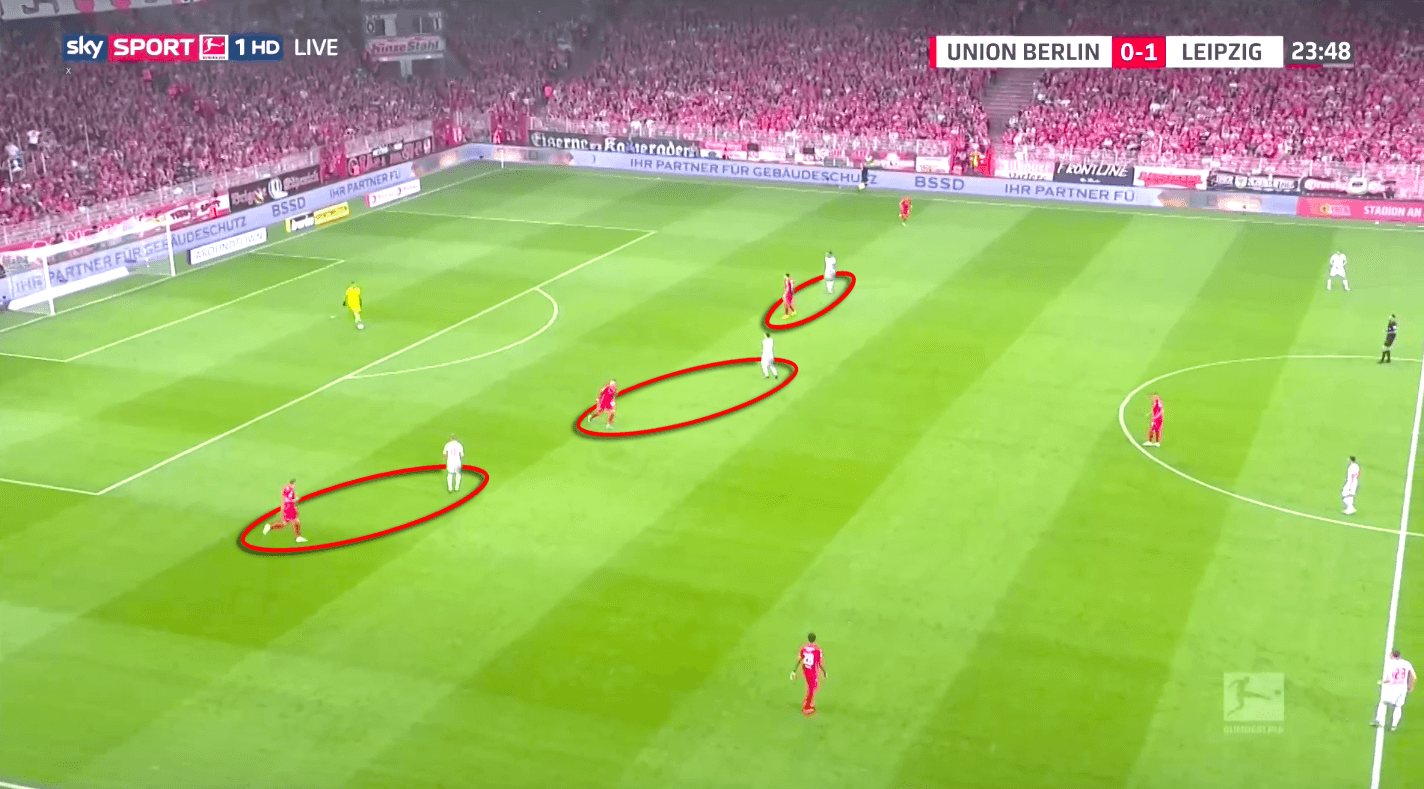
As a consequence, the home-side often hit the ball long towards striker Sebastian Andersson or right-winger Suleiman Abdullahi. But Leipzig’s defenders won most of the aerial duels and made sure their midfielders could win the second ball to secure possession.
Despite Leipzig’s promising attacking patterns, the goals resulted from errors during Union Berlin’s build-up phase. Whenever Fischer’s side did not hit the ball long they gave the ball away too easy.
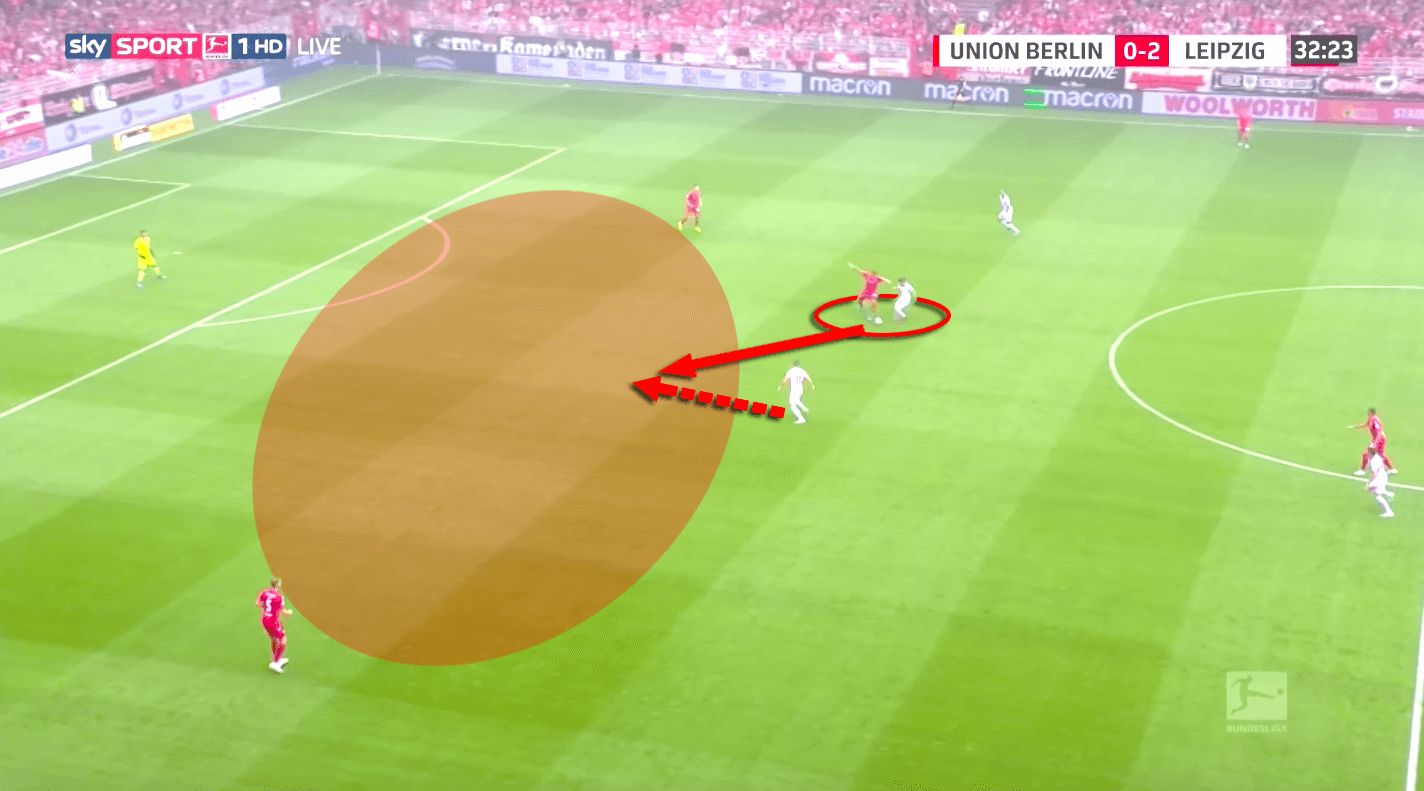
Especially against a side with the attacking pace of RB Leipzig, these mistakes are deadly.
Similar as under Ralf Rangnick, Leipzig immediately attacked the opposition goal after winning the ball. Strikers Werner and Poulsen used deep runs to occupy the opposition defenders while the advanced midfielders supported the attack. Therefore, it was not a surprise that midfielder Sabitzer scored the second goal in a counter-attack.
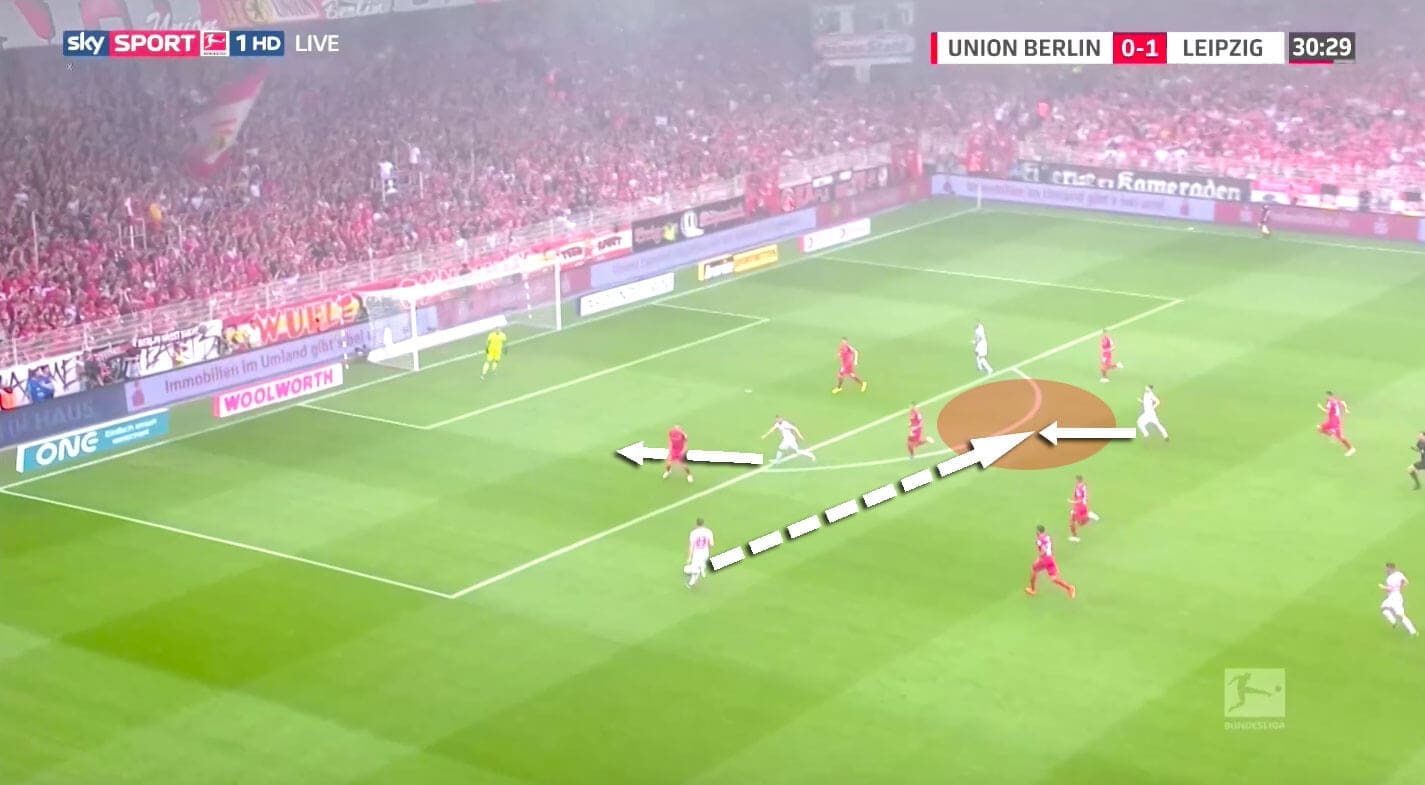
However, direct attacking in transition moments is also a tool that Nagelsmann used at Hoffenheim.
Union’s 4-4-2 press in the second half
In the second half, Union Berlin changed to a 4-4-2 formation and attempted to defend more actively. They set up a mid-block around the halfway line and used square passes within Leipzig’s first build-up line as a pressing trigger.
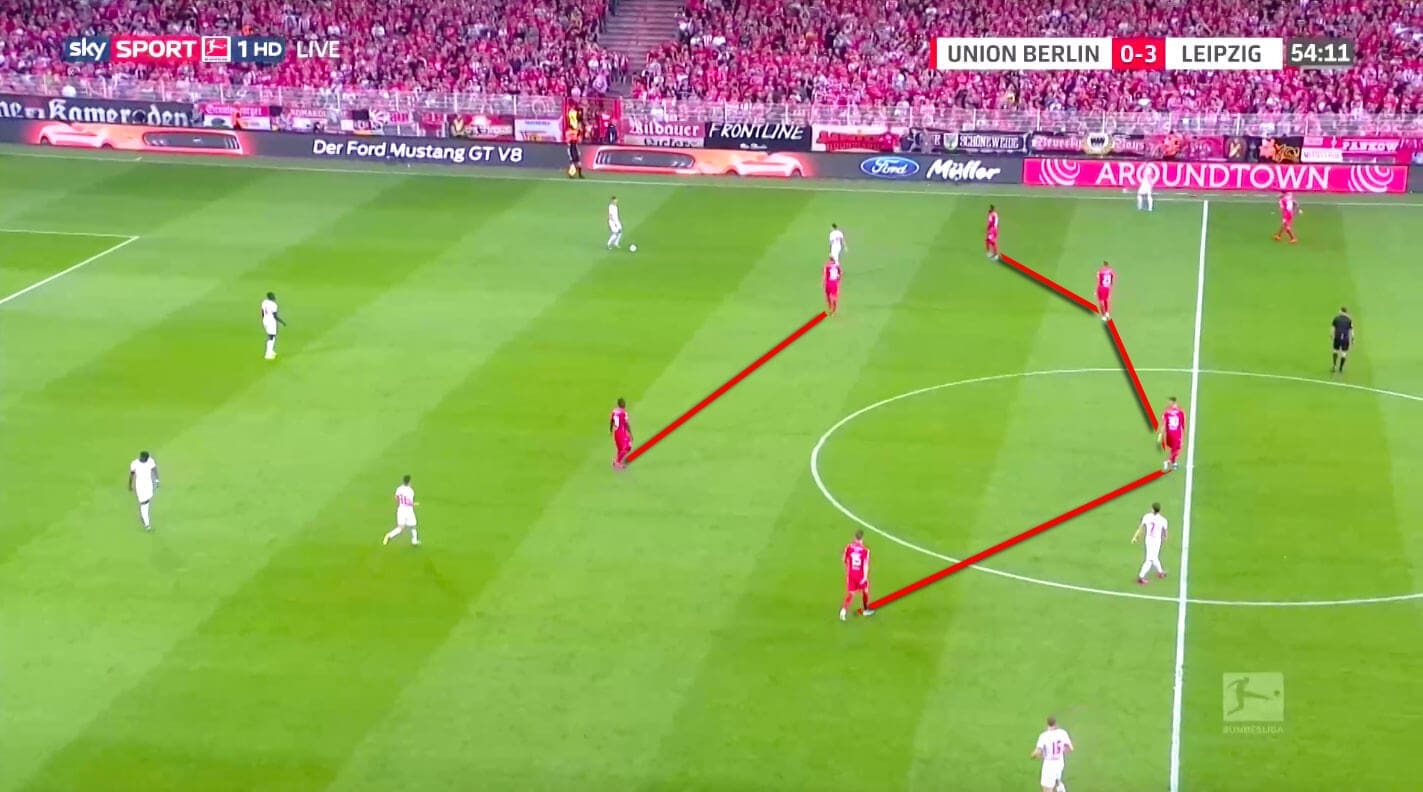
The 4-4-2 allowed Union Berlin to prevent Leipzig from playing diagonal passes into midfield more often. Since Nagelsmann’s side like to play these diagonal balls in order to allow their central midfielders to receive with an open body shape, their press forced Leipzig to play more vertical and horizontal passes which they obviously struggled with. Union Berlin then utilised the advantages of pressing from the blindside and immediately pressed the ball receiver forcing him to make mistakes.
In one of these situations which is displayed below, Union Berlin could win the ball after one of Leipzig’s midfielders played a back pass to Ibrahima Konaté who lost the ball to striker Andersson. Although the press resulted in a huge scoring opportunity for Union Berlin, Leipzig defender Konate could amend his mistake with a last-second sliding tackling.
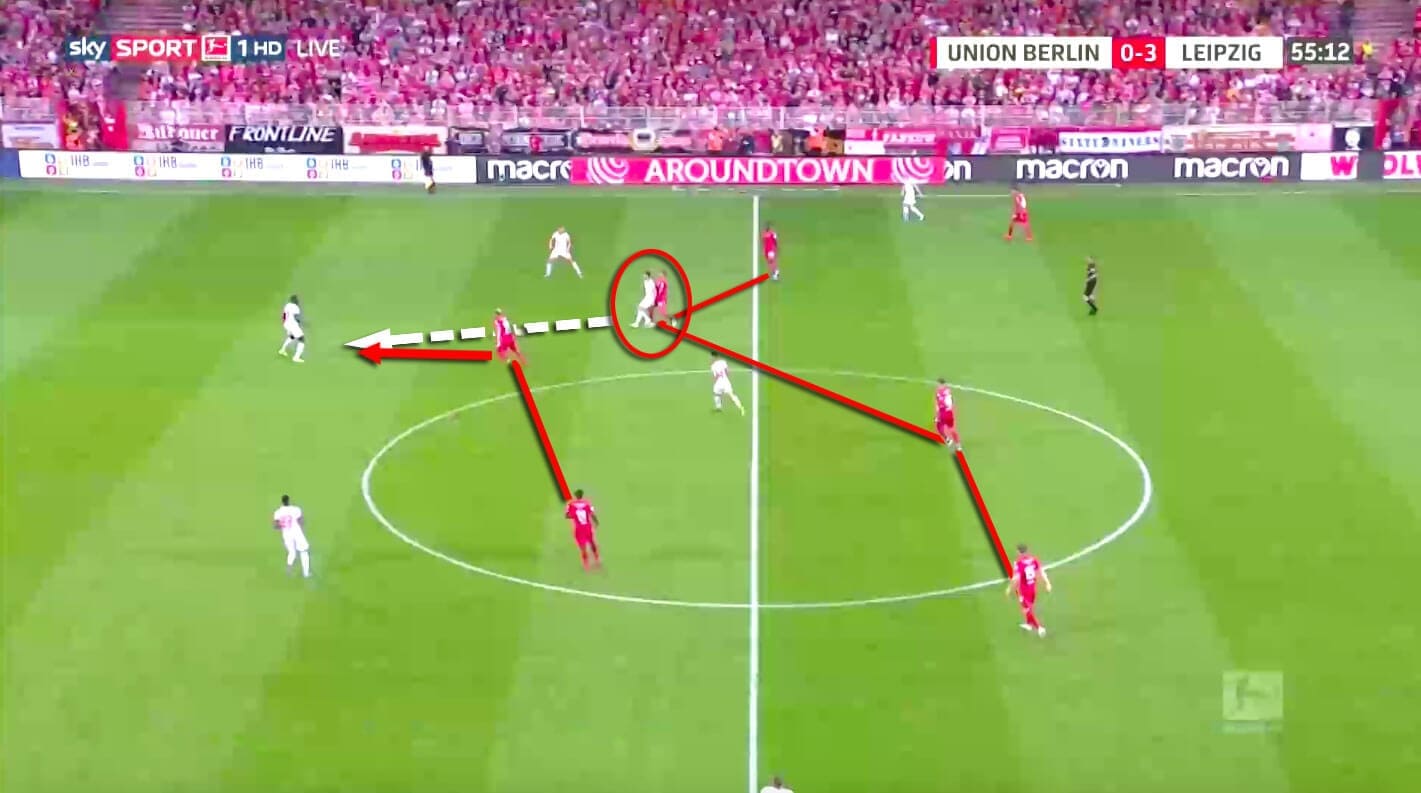
Another problem was Berlin’s incapability of creating goal-scoring opportunities up front. Fischer’s team utilised early crosses to get into the opposition penalty area. However, only very few of them resulted in shots. One reason for that was the position from where the crosses were taken. Since Union Berlin did not progress up the pitch but put in the crosses from midfield, they were easy to defend. A further issue coming along with this approach was Leipzig’s aerial superiority in the back.
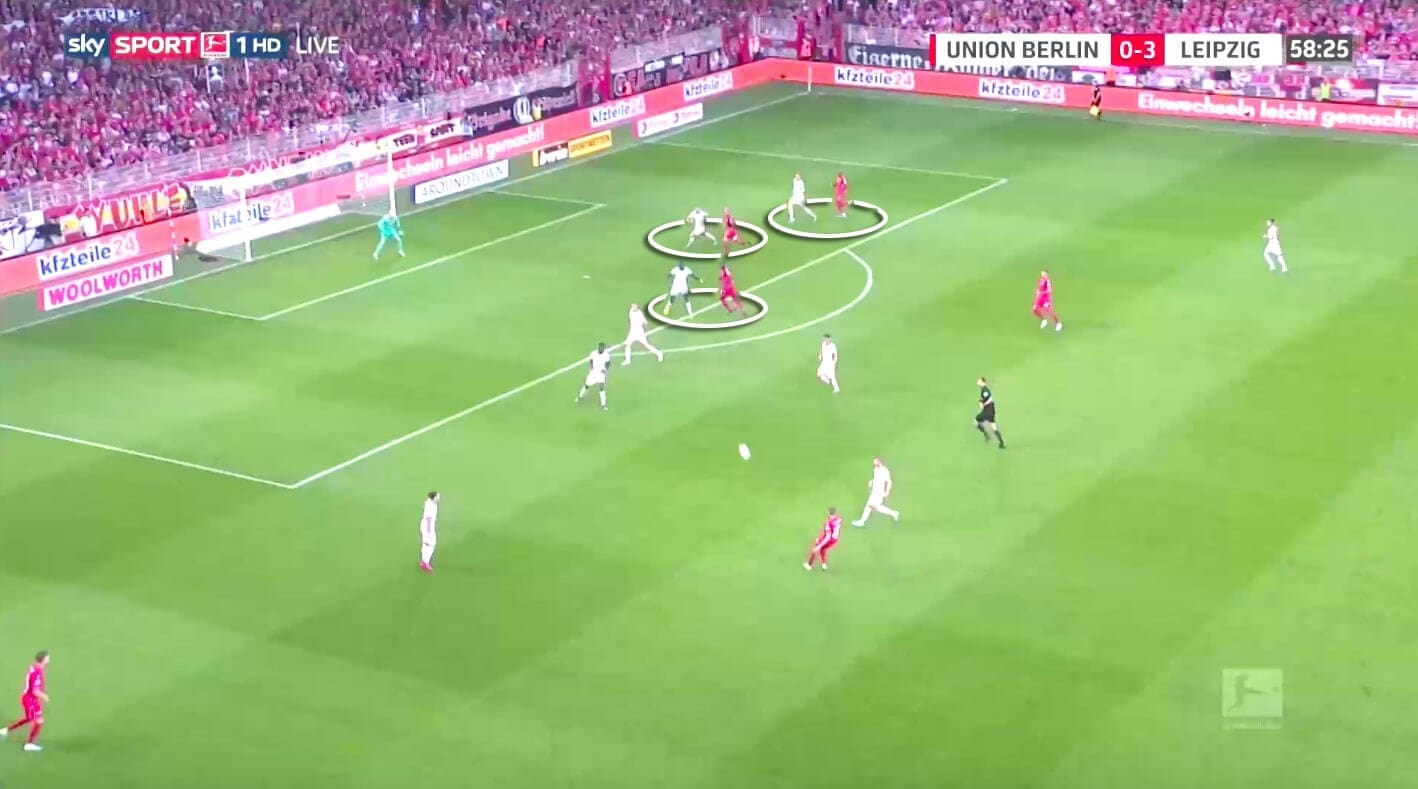
All in all, Union Berlin put in 18 crosses of which only two found a Union attacker. With only two shots on target, Fischer’s side remained rather harmless throughout the match.
Leipzig’s efficiency
Last but not least, when taking a look at the numbers, RB Leipzig seemed highly efficient. And anyone who is familiar with the recent struggles of Nagelsmann’s Hoffenheim knows that this was one of his biggest issues.
There is definitely not much doubt that scoring four goals from eight shots on target is a good value. However, these numbers should not be overestimated. When depicting the shot locations, it becomes clear that all Leipzig goals were scored from very dangerous positions.
Those are some sexy shot locations by RB Leipzig. pic.twitter.com/LISeDE86iU
— Between The Posts (@BetweenThePosts) August 19, 2019
Moreover, only few Union Berlin defenders were in close proximity to the goalscorers or capable of preventing them from finishing.
That being said, it still remains to be seen whether Nagelsmann’s approach is compatible with an efficient usage of chances.
Conclusion
To sum up, Union Berlin facilitated Leipzig to score early goals and therewith lost the game already in the first half. In order to avoid being relegated after just one season, Union Berlin will need to improve their build-up phase, add more creativity to their attacking patterns and stabilise their defence.
Moreover, our tactical analysis proves that RB Leipzig already implemented some of Julian Nagelsmann’s tactics. The back-three build-up and diagonal line-breaking passes through the centre resembled much of TSG Hoffenheim under Julian Nagelsmann. Leipzig’s press, on the other hand, seemed a bit less aggressive than under Ralf Rangnick.
Nevertheless, it remains to be seen whether Leipzig can also create enough chances against defensively more solid sides though.

If you love tactical analysis, then you’ll love the digital magazines from totalfootballanalysis.com – a guaranteed 100+ pages of pure tactical analysis covering topics from the Premier League, Serie A, La Liga, Bundesliga and many, many more. Buy your copy of the August issue for just ₤4.99 here.

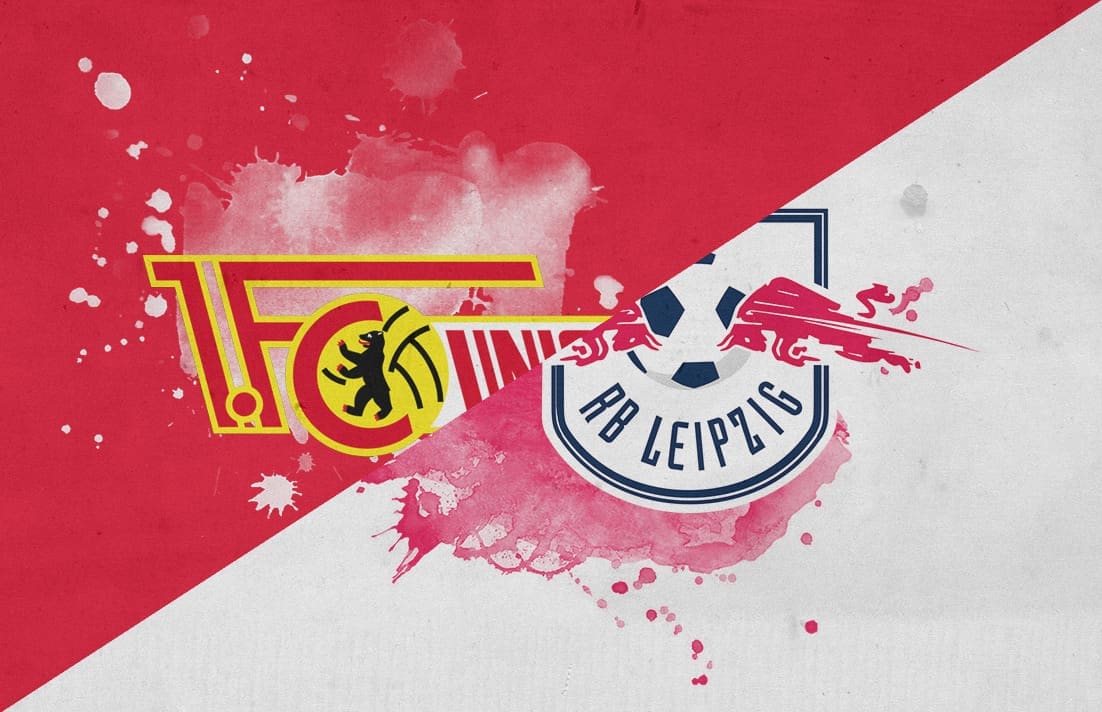



Comments